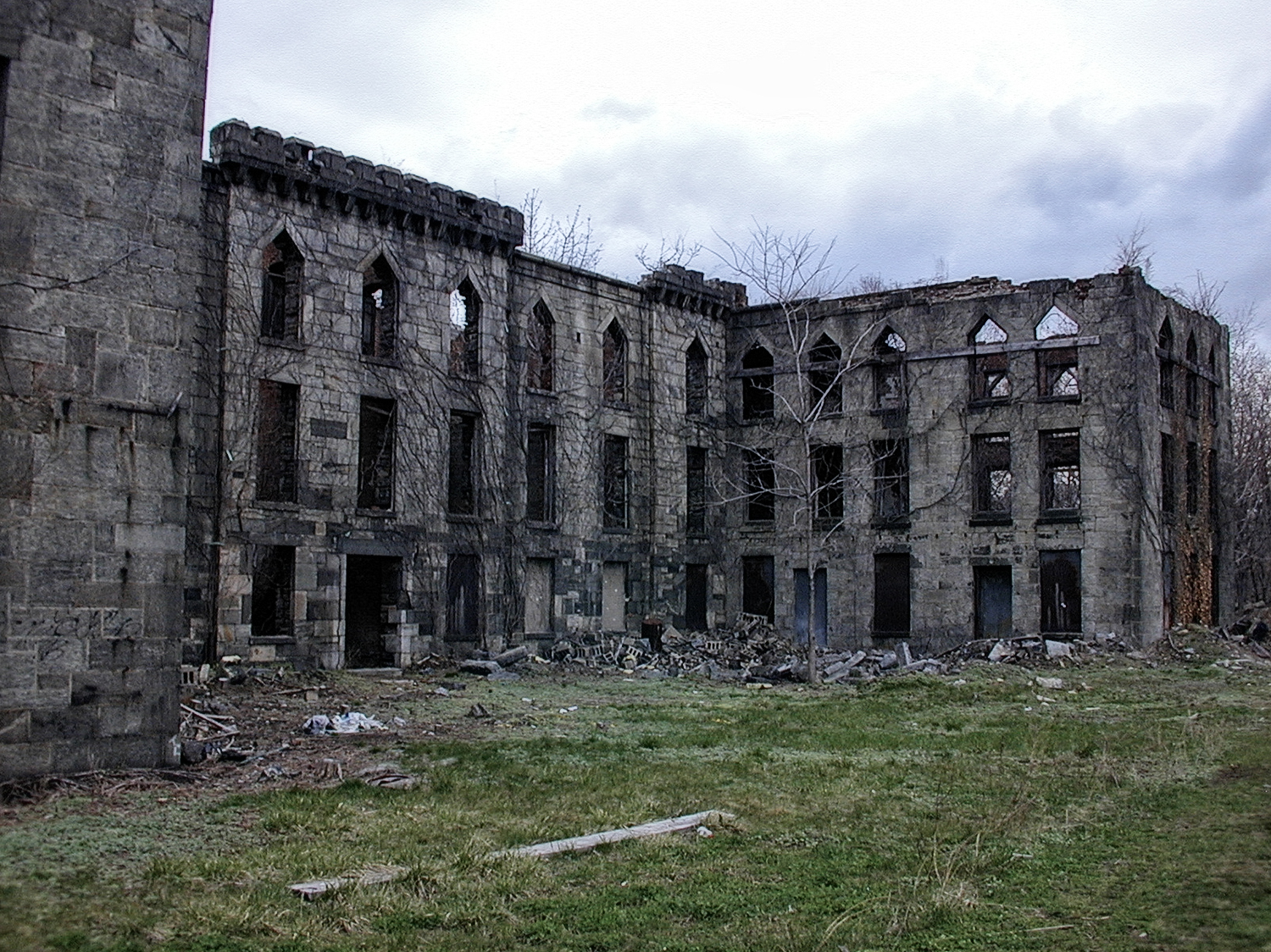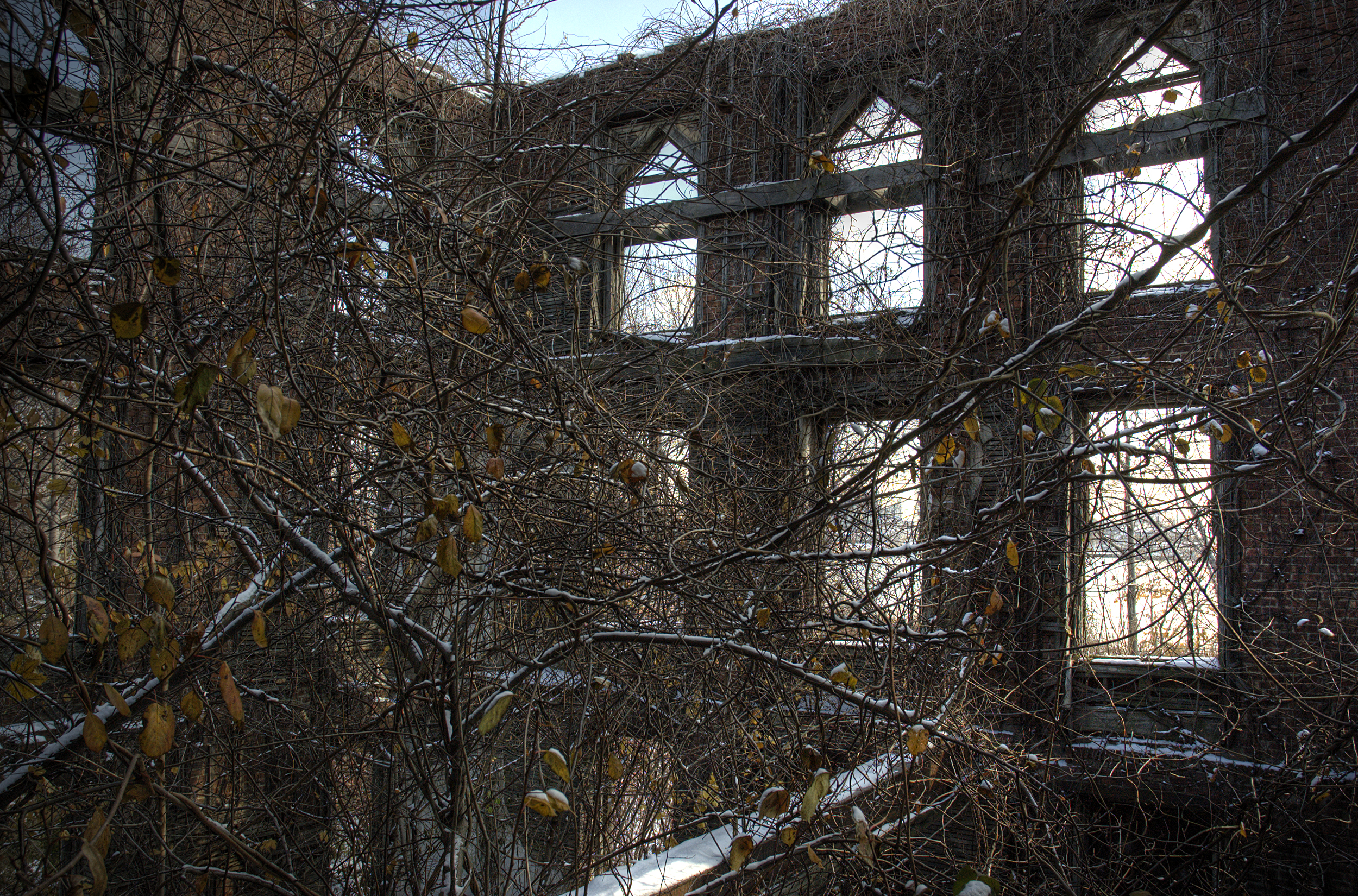Photos from 2006
Timothy Vogel is part photographer, part urban explorer, and part historian. He maintains a terrific Flickr page and travels to Roosevelt Island and New York City, capturing not only various aspects of the City’s infrastructure, but also its growth and its destruction. Many of his photographs are of cultural sites scattered across Manhattan like the Intrepid Museum and the James A. Farley Post Office building on 34th street. But Vogel is not confined to Manhattan alone, he explores locations in all boroughs, like the Schwartz Chemical Plant in Long Island City, the Green-Wood Cemetery in Brooklyn (which is also the site of architect James Renwick, Jr.’s grave), and Wave Hill in the Bronx.
Over the course of many months in 2006 and 2007, Vogel visited the Smallpox Hospital and took photographs. His summer images show the lush overgrowth that once surrounded the building while his winter photographs expose the harsher realities of being entirely exposed to the elements: snow accumulating on the ground floor and invasive weeds filling the interiors.
Photographs of the Ruin interiors taken in 2006/2007 during the winter months, Timothy Vogel
Vogel's photograph depicts the northern façade a few months before its collapse, Timothy Vogel
More important, however, his photographs of the Ruin document the structure just months before the collapse of its northern wall. In one photograph, the façade bows outward under the weight of time and reveals imminent collapse. The sizeable bay window, which now no longer exists, is supported by large wooden timbers, and appears to only cling to the rest of the building. On December 26, 2007, a large storm hit the City and the accumulation of snowfall on the building’s roofline caused this northern wall to crumble. It brought down with it beautiful architectural details like the crenelated bay window and many of the pointed arches from the third floor. Vogel's single photograph provides a wonderful history the façade’s prior composition. (Here is the Gothamist story which shows the collapse.)
On a positive note, the collapse renewed City and State interest and concern for the Ruin and they completed a $4.5 million temporary stabilization of the structure, documented briefly by the New York Times here. Today, the stones that once made up this northern wall are palletized in the Ruin’s eastern yard and the northern façade is braced with moment framing.






